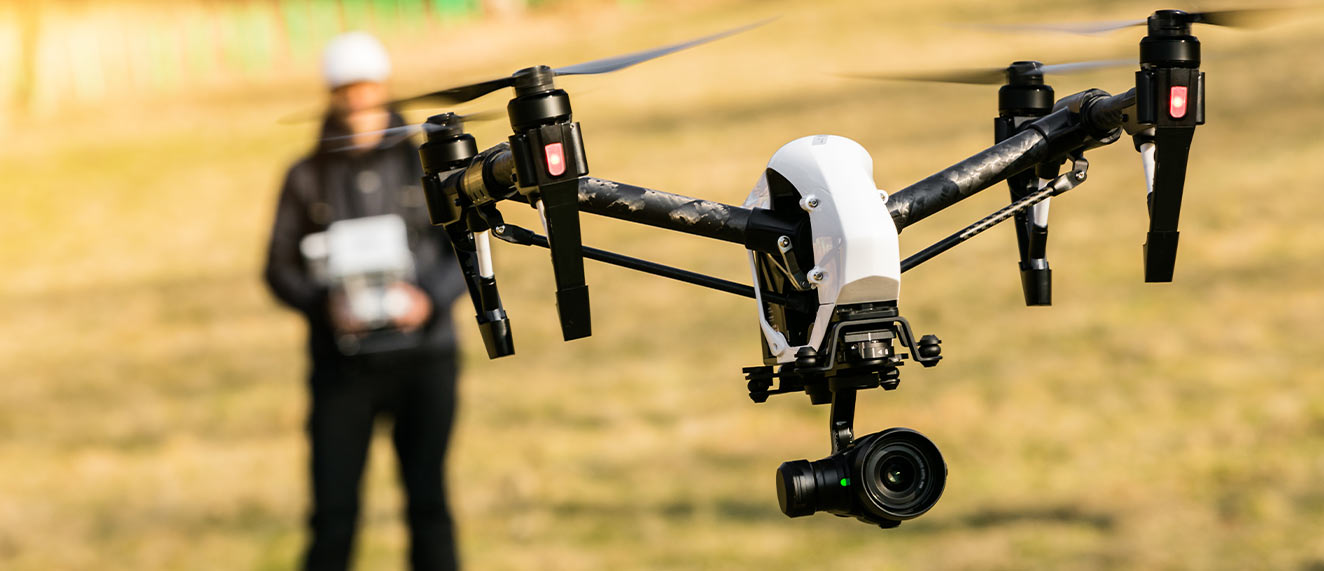Drones have been creating quite a buzz in the REALTOR® community over the past several years. Real estate professionals take pride in their ability to adapt to the ever-changing world around them, therefore it’s no surprise the industry has embraced this innovative way of photographing a property.
At the leading edge of this change is Bob Crocker, a REALTOR® and salesperson from Newfoundland and Labrador with experience as a pilot and photographer, who has followed the emergence of unmanned aerial technology since its budding days.
“In a dynamic market such as ours, it’s always important to be at the forefront of change,” he said. “Drones are an incredible asset to our industry. They allow us to market our listings with the top-tier professionalism our industry is known for.”
Real estate professionals from across the country are recognizing the value drone technology can bring to their businesses and it won’t be long until unmanned aerial vehicles become a regular staple in your toolkit. Below are some helpful tips to give you the knowledge you need to take your listings above and beyond.
Get familiar with the laws and regulations
On June 1, 2019, Transport Canada introduced a set of comprehensive guidelines for drones between 250 grams and 25 kilograms. Understanding these rules should be your foremost priority. The regulations outline two categories of operations—basic and advanced—each with its own unique guidelines and licenses. Understand the differences and acquire the correct certification or you may face a significant financial penalty.
Having a good understanding of trespassing and privacy laws is also essential. Transport Canada provides a useful set of guidelines on their website; however, make sure to check local and provincial laws in your area in order to get the full picture.
Finding the right drone and learning to fly
Select your drone carefully. Consider how you will use your drone and which model best suits your intended purposes. If you’re new to drones, find one that matches your skill level with a robust design that can take a few knocks while you’re learning the ropes. If your sole intent is to use your drone for marketing your listing, you won’t need anything with an overly remarkable battery life, just a good camera and accessible controls.
After you’ve found the right drone, it’s time to take it for a test flight! Find an open area free of bystanders where you can see the drone at all times. Once you start to feel confident with the controls, pick out a landmark and get some camera practice. Take a few low passes, practice traversing and familiarize yourself with the lens. Have some fun with it. The more practice you have, the more prepared you’ll be when you take your drone to a listing.
TIP: Before liftoff, there are a few pre-flight checks you should perform. Check the weather, you’ll want to fly on a clear, windless day. You should also survey the property and note any potential obstacles, such as tall trees, neighbouring homes or street signs.
Get the right angles
If your listing has a spectacular view or a beautiful backyard, you’ll want to highlight these features; however, don’t forget that the home should always be the focal point.
Almost all drones are equipped with a wide-angle lens. This means the camera is best used for capturing landscapes rather than details. While it’s fun to take your drone up high, you’ll want to stay closer to the ground when shooting homes so you’re only capturing what’s relevant to the property. Use exciting and dynamic angles to make the property stand out. Unless you’re well-versed in how a camera works, stick to automatic settings—piloting a drone is a handful without having to also change the camera settings.
Composition
Composition is the foundation of a good photograph. Simply put, composition is the arrangement of objects and elements within the frame. The idea is to guide the eye towards the most important aspects of the photograph through symmetry, exclusion, leading lines or repetition. Perhaps the most well-known composition technique is the “rule of thirds,” which divides a photo into nine equal sized quadrants, with three horizontal lines and three vertical lines. The intersecting points are where the subject of your photo should be. Understanding the rule of thirds is essential to creating a good photograph.
Your skills in photography will always be in development and much like any other craft, it can never be truly mastered, but by following these simple tricks, you’ll have all the basics for drone photography covered.
Have any tips of your own? Include them in the Comments below.
The article above is for information purposes and is not legal advice or a substitute for legal counsel.





